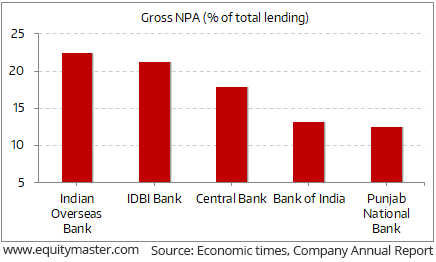- Home
- Todays Market
- Indian Stock Market News October 9, 2017
Sensex Opens Flat; Energy & PSU Stocks Top Losers Mon, 9 Oct 09:30 am
Asian stock markets are higher today ahead of China Caixin services PMI. The Shanghai Composite is up 1.18% while the Hang Seng is up 0.27%. The Nikkei 225 is trading up by 0.30%. US stocks closed mostly lower on Friday after data showed the labour market experienced its first contraction in seven years.
Back home, share markets in India have opened the day on a flat note. The BSE Sensex is trading lower by 13 points while the NSE Nifty is trading lower by 3 points. The BSE Mid Cap and BSE Small Cap index both opened the day up by 0.3%.
Sectoral indices have opened the day on a mixed note with stocks from healthcare sector and consumer durables sector leading the pack of gainers. While, energy stocks and PSU stocks have opened the day in red. The rupee is trading at 65.23 to the US$.
Pharma stocks are trading mixed today with Sun Pharma and Ajanta Pharma being the most active stocks. Zydus Cadila has received final approval from the US health regulator to market Amitriptyline hydrochloride tablets used for treatment of depression in the American market.
The United States Food and Drug Administration (USFDA) granted approval to market the tablets in strengths of 10 mg, 25 mg, 50 mg, 75 mg, 100 mg and 150 mg.
Further, the drug, used in treating depression, will be manufactured at the group's formulations facility at SEZ Ahmedabad.
Notably, the group now has more than 160 approvals and has so far filed over 300 abbreviated new drug applications (ANDAs) since the commencement of the filing process by the company.
One shall note that, USFDA alerts on Indian pharma companies have increased over the past few years. Regulators used to visit the plants every two years. Now they come every eight months.
Increasing inspections has led to a total of 41 import alerts in the past eight years. This clearly signifies increased USFDA scrutiny on Indian pharma firms.
The list of pharma sector woes is long. But, is there light at the end of the tunnel?
Here's what Sarvajeet Bodas, our Research analyst wrote about the sector in the recent edition of The 5 Minute WrapUp:
"While short-term pain is expected, companies with strong R&D capabilities and compliant plants will do well over the long term. The uncertainties make it important to be stock specific in the sector. It is important to look for companies that have the competence and staying power to overcome the challenges."
So, what is key to identifying potential multibagger stocks? How does one pick them at the right time and ride them to their full potential? How many multibaggers do you really need to achieve the big riches that you desire?
Most importantly, are there any stocks right now that could turn out to be multibaggers? Click here to know everything that you need to know right now about mutlibagger stocks...
Moving on to the news from the banking sector. As per an article in a leading financial daily, Punjab National Bank (PNB) has put assets of as many as 32 bad loans with outstanding loan exposure of Rs 11.8 billion on the block in an effort to bring down its non-performing assets (NPAs).
These NPAs include Hanung Toys and Textile, Harbs India, United Foods and Harman Textile. PNB has a total exposure of Rs 7.7 billion to the consortium that extended the loan to Hanung Toys and Textile, the reports noted.
Notably, the listed toys and textile company is the biggest defaulter in the list with consortium lending to the tune of Rs 29.6 billion.
For the quarter ended June 2017, the gross NPAs in absolute term stood at Rs 5772.1 billion, while the net NPAs were Rs 3457.3 billion. In percentage terms, the gross NPAs declined marginally to 13.7% of gross advances as on 30 June 2017 from 13.8% a year earlier.
However, on a sequential basis, gross NPAs increased from 12.5% as on 31 March 2017. Net NPAs came down, both yearly and sequentially, to 8.7% of the net advances.
The provisioning to cover bad loans also came down to Rs 25.6 billion from Rs 31.7 billion parked aside in the June quarter of the previous fiscal.
One shall note that, gross non-performing assets (GNPA) of Indian banks rose from 9.2% in September 2016 to 9.6% in March 2017. GNPA refers to the total value of loans on which interest and principal income has not been received by the bank for more than ninety days.
For some banks, the ratio of GNPAs to total lending is more than 20%. This means more than Rs 20 out of every Rs 100 lent is at the risk of not coming back.
Rising Bad Loans at Indian Banks
The RBI expects the average GNPA ratio to increase to 10.2% by March 2018. It indicated that if macroeconomic conditions worsen, this number could go up.
Although RBI is showing urgency in tackling the NPA issue, a lot more needs to be done by lenders too to stop the rot.
Punjab National Bank share price opened down by 0.7%.
For information on how to pick stocks that have the potential to deliver big returns, download our special report now!
Read the latest Market Commentary



Equitymaster requests your view! Post a comment on "Sensex Opens Flat; Energy & PSU Stocks Top Losers". Click here!
Comments are moderated by Equitymaster, in accordance with the Terms of Use, and may not appear
on this article until they have been reviewed and deemed appropriate for posting.
In the meantime, you may want to share this article with your friends!